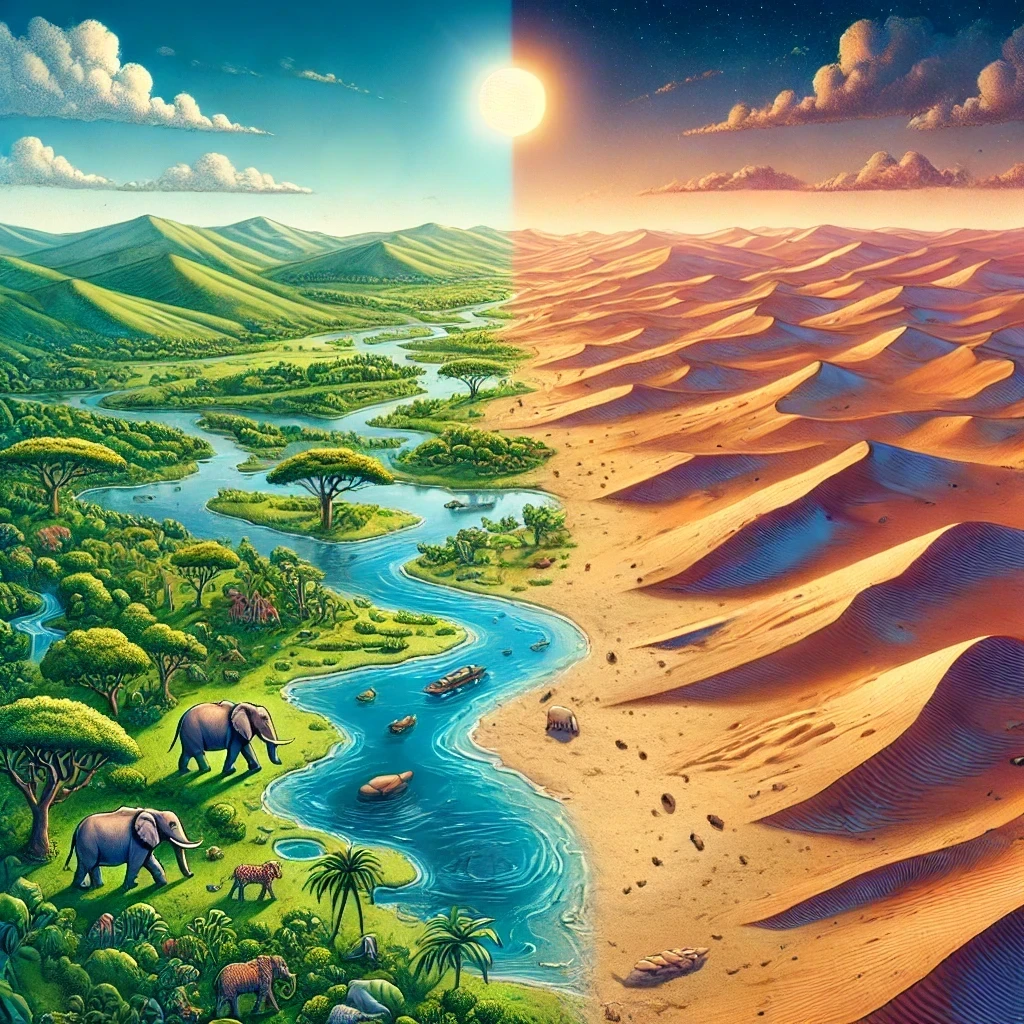
When we think of the Sahara Desert, we picture endless sand dunes, scorching heat, and a landscape that seems uninhabitable. But what if I told you that thousands of years ago, the Sahara was not a desert at all—but a lush, thriving rainforest?
The Green Sahara: A Forgotten Paradise
Roughly 6,000–7,000 years ago, the Sahara was a fertile savanna teeming with lakes, rivers, and abundant wildlife. Instead of vast, dry sand dunes, the landscape was covered in grassy plains, woodlands, and even tropical vegetation. This period, known as the African Humid Period, transformed what we now consider a barren wasteland into a thriving ecosystem.
Archaeological evidence shows that the region was home to hippos, elephants, giraffes, and even crocodiles—animals that today only exist in much wetter climates. Ancient cave paintings found in places like Tassili n’Ajjer, Algeria, depict humans herding cattle, fishing, and even swimming in lakes—an unimaginable scene in today’s desert.
What Caused the Sahara to Become a Desert?
The shift from a green Sahara to the world’s largest hot desert was driven by changes in Earth’s climate. Scientists believe that around 5,500 years ago, gradual shifts in the Earth’s orbit caused a reduction in monsoon rains. With less rainfall, vegetation died out, lakes dried up, and the land slowly turned into the arid landscape we see today.
This process, called desertification, happened over centuries, but the consequences were profound. The once-thriving human populations of the Sahara were forced to migrate, many moving toward the Nile River Valley, contributing to the rise of ancient Egyptian civilization.
Could the Sahara Turn Green Again?
Interestingly, the Sahara’s transformation may not be permanent. Climate models suggest that in about 10,000 to 15,000 years, Earth’s natural cycles could bring back increased rainfall, potentially turning the Sahara green once more.
Additionally, some modern geoengineering projects propose ways to re-green the desert using afforestation and water management techniques. While controversial, these efforts could help fight climate change and restore parts of the Sahara to its former green glory.
The Sahara Desert’s incredible past reminds us that Earth’s landscapes are constantly changing, shaped by forces far beyond our control. What is now a harsh desert was once a paradise of rivers and forests, and perhaps, in the distant future, it will be again.
If nothing else, it serves as a fascinating example of how climate change can reshape entire regions, and how our world’s past holds secrets that continue to surprise us.
What do you think? Could we one day see a green Sahara again? Share your thoughts in the comments! 🌍💚
